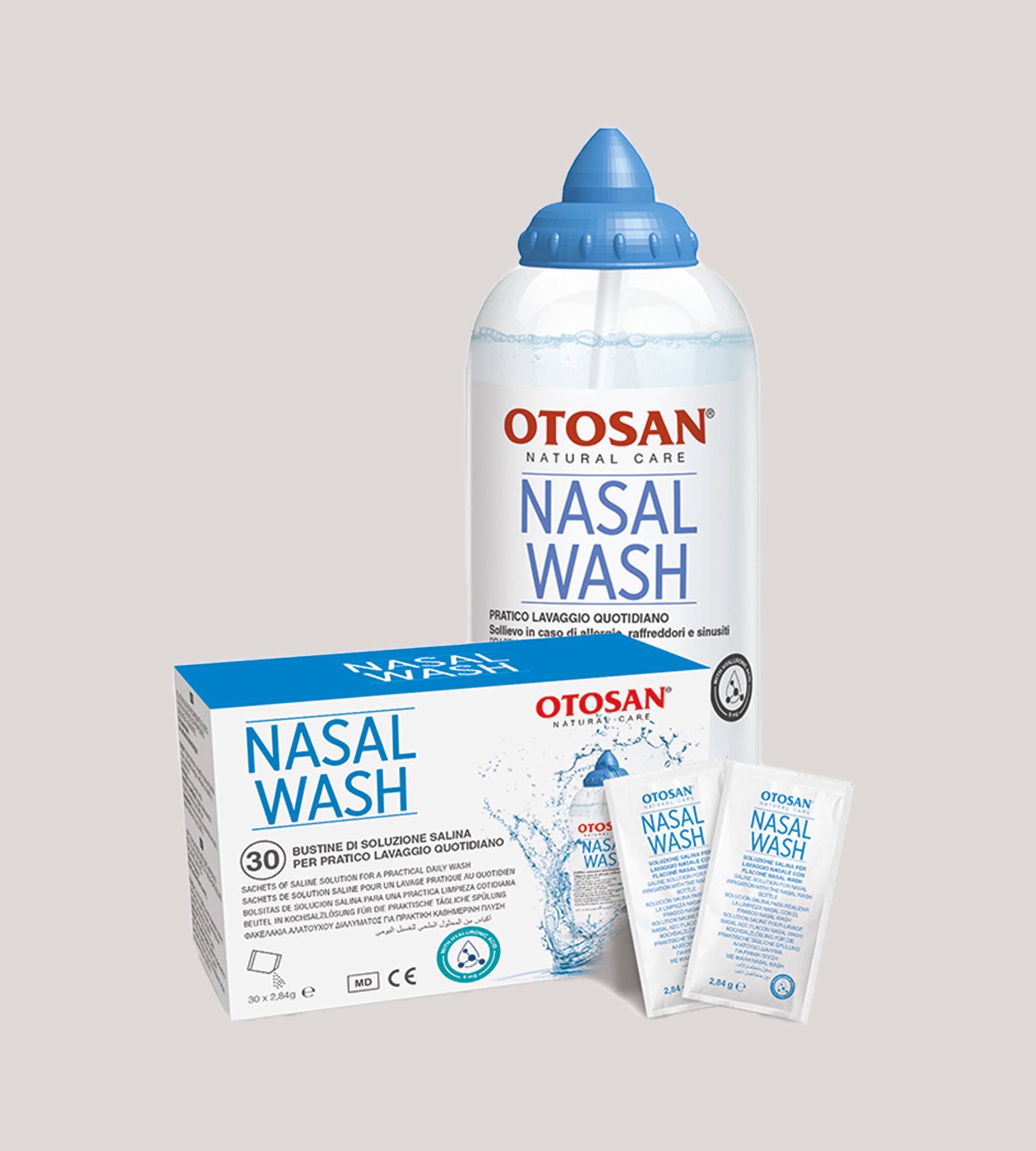Dry nasal mucosa in children? What is crusty rhinitis, causes and symptoms

Reading time: about 3 minutes
During transitional periods between seasons and when there are abrupt climate changes, it is common for children to contract a cold. Along with this condition, it is not unusual for the nasal mucosa to become very dry and sensitive to the point of sometimes evolving into so-called crusty rhinitis.
But what are the reasons? Let's find out together.
Common symptoms of a cold are runny mucus from the nose, a dry feeling in the throat and watery eyes, conditions caused by a temporary inflammation of the nasal mucosa, called rhinitis, which produces excessive mucus to protect the body.
What are the effects on the mucous membrane of children when they suffer from rhinitis?
When children contract rhinitis, inflammation, known as swelling of the mucosa, occurs. Since the nasal mucosa is criss-crossed by many blood vessels, during a cold their dilation causes rapid swelling of the mucosa and an excessive production of more or less liquid mucus.
As a result, breathing through the nose becomes more complicated, while breathing through the mouth leads to rapid drying and irritation of the larynx, causing the classic sore throat.
Usually this phase is limited by itself and resolves spontaneously, promoting healing with simple nostril cleansing treatments.
Dryness in the nose: what are the possible causes?
There are several possible causes:
- Environmental factors: exposure to cigarette smoke, pollution and other environmental irritants can aggravate stuffy nose symptoms in children.
- Seasonal allergies: pollen, dust and animal hair are common allergens that can cause local allergic reactions worsening the dry condition.
- Very dry climate.
Dryness in the nose: what are the possible symptoms?
- Difficulty breathing: Children with a stuffy nose may have problems breathing, especially during the night, affecting their sleep and overall well-being.
- Irritability and discomfort: irritability and tiredness due to lack of rest and general discomfort caused by nasal congestion.
- Nasal congestion: feeling of a blocked nose and difficulty breathing through it.
- Decreased appetite: due to the hindrance in breathing and swallowing, children may consume less food.
When does rhinitis in children become crusty?
Sometimes dry rhinitis can develop into a crusty form characterised by the presence of crusts in the nose, accompanied by itching, sneezing and total nasal occlusion.
Because the amount of mucus produced is too low, air humidification and purification cannot take place as expected, causing inflammation in the larynx and bronchi, making them more susceptible to infection.
One possible consequence is that part of the mucous membrane becomes infected and the small crusts can take on an unpleasant smell and turn dark green or black. In addition, the inner lining of the nose, called the nasal mucosa, which defends us from external agents and protects the underlying bone, may temporarily lose thickness.
A child with this condition may experience a burning sensation in the nose, accompanied by a completely stuffy nose, headaches and facial pain, similar to that of sinusitis.
Advice and remedies.
In the first instance, it is essential for children to spend time in the open air, avoiding enclosed spaces as much as possible and promoting proper nasal cleansing through:
- Nasal washes with saline solutions: the use of saline solutions for nasal washes helps to remove mucus and reduce congestion effectively.
- Nasal sprays based on natural ingredients: as an adjuvant treatment in cases of dryness, mucous membrane irritation and nasal congestion.
- Adequate hydration: giving children warm drinks or water can help make mucus more fluid and facilitate its removal.
- Environmental humidifiers: maintaining an adequate level of humidity in the environment is helpful to reduce dryness of the nasal passages and facilitate breathing.
If your child is subject to persistent nasal congestion, it is always advisable to consult your paediatrician for more specific and targeted treatment.
ATTENZIONE: Le informazioni riportate in questa pagina provengono da Fonti aziendali e sono pubblicate dopo attente verifiche delle fonti, scelte con cura e per quanto possibile aggiornate ed ufficiali, ma non devono essere considerate informazioni complete e universali, né è possibile garantire l’assenza di errori e la correttezza delle informazioni divulgate.
Testi, immagini, foto e disegni relativi a Dispositivi Medici e Presidi Medico-Chirurgici contenute in questa pagina non hanno carattere né natura di pubblicità e si rivolgono ad un pubblico clinicamente informato. Otosan srl ha la facoltà di apportare eventuali modifiche alle informazioni pubblicate senza darne avviso preventivo. È vietata la riproduzione al pubblico se non per uso strettamente personale e non pubblico.







